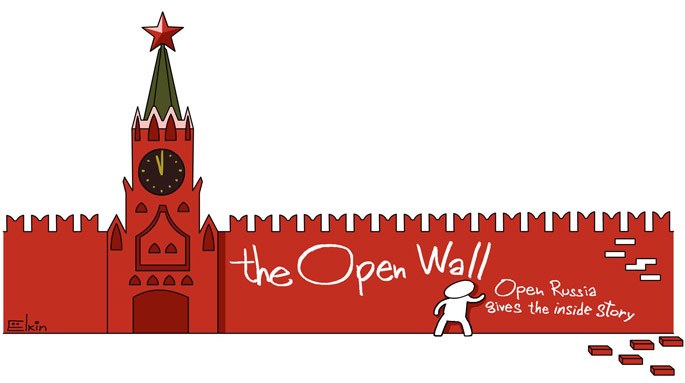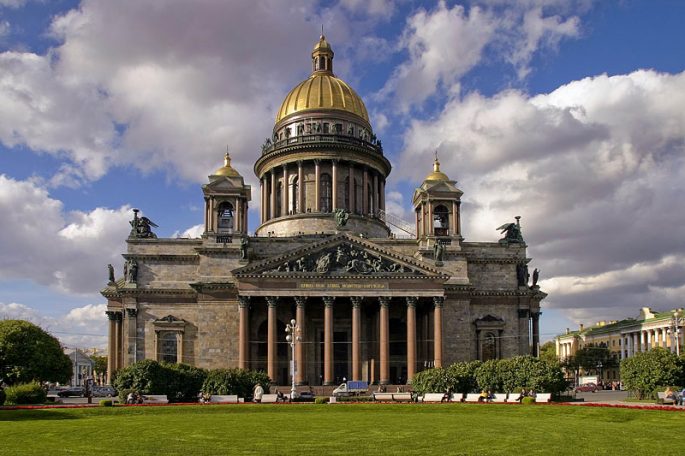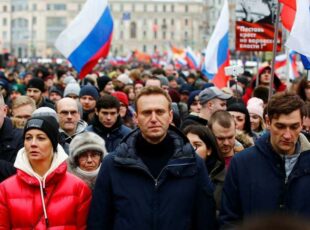Scandalous? Yes. Surprising? Hardly

Scandalous? Yes. Surprising? Hardly
The recent announcement regarding the proposed handover to the Orthodox Church of St Isaac’s Cathedral in St Petersburg has sparked a considerable scandal.

Everyone’s familiar with Moscow’s Orthodox churches and their onion domes; St Basil’s Cathedral on Red Square – an enormous wedding cake of a structure – is famous the world over as a kind of Disneyland avant la lettre. But not many people are aware that central Moscow is also home to two Protestant churches – an Anglican one, constructed out of fox-red brick, and a Lutheran one, its white spire jutting sharply into the sky.
If you pop in for a quick prayer, or simply to catch an organ concert (a rare treat in Russia), you really ought to fire off the following accusation in the direction of the local pastors: the recent announcement regarding the proposed handover to the Orthodox Church of St Isaac’s Cathedral in Petersburg has sparked a considerable scandal, and Protestants are “partly to blame.” Yes, you read that right. Protestants. “Partly to blame.”
Three hundred years ago, Peter the Great, fresh from a tour of Holland, England and other Western European countries, moved Russia’s capital to his eponymous city, secured an outlet to the Baltic – and instigated a major reform of the church. Inspired by Protestant models of church-state relations (or at least Protestant models as he understood them…), he abolished the independence of the Orthodox Church in Russia and effectively transformed it into a department of state. Priests became officials; upheavals and revolutions notwithstanding, they remained officials under the Bolsheviks (even if Stalin did revive the Patriarchate during the war), and remain officials to this day.
The Byzantine “symphony” of church and state power, wherein latter and former co-exist on a more or less equal footing rather than being subordinate to one another, was, if you’ll pardon the pun, virtually silenced by Peter, and has never since rung forth in Russian life. Clearly enough, this ecclesiastico-governmental “utopia” was beset by various imbalances and disequilibriums (and this goes for both medieval Moscow and Constantinople itself); but it was, at the very least, enshrined in the social order of the day, just as the current Constitution of Russia enshrines the separation of the executive, legislative and judicial branches of power. Indeed, the head of the Orthodox Church in old Rus would often publicly condemn grand dukes and tsars, and even accuse them of sin. He could simply relocate to a neighbouring dukedom as a mark of protest, or impose a temporary anathema and shut down all the churches in the region. All this had a genuine effect: God-fearing commoners and rulers alike lived ever heedful of this constraint on absolute power.
Post-Tatar Muscovy, though by nature a more Asian polity (it vanquished the Tatar dragon by effectively becoming that dragon), tolerated the autonomy of the church for another two hundred years. Though with notable exceptions, of course: Ivan the Terrible, for instance, simply slaughtered the hierarchs who spoke out against his mass repressions.
But even back then, the church’s autonomy was being gradually eroded. Peter, convinced he was emulating the Protestants, merely finished what the Tatars had begun. Everything and everyone must be subordinated to the absolute monarch – including the church. No one must be allowed the right to voice their own stance on things, still less an ethical or moral stance. You need only replace the word “monarch” with the names of Stalin or Putin to realise how unchanging this formula really is.
When, a quarter of a century ago, in those heady days of perestroika and glasnost, the church – together with everyone else – was seemingly intoxicated by the air of freedom and the winds of change, many foolishly grew to believe that, for the first time in centuries, it would once again become free and Byzantine (and this is one of those rare occasions when these two terms can be used synonymously). But the euphoria gradually subsided, and the church remained a department of state.
Back to St Isaac’s in Petersburg, then. What’s really going on here? Precisely this: one department of state is transferring an architectural monument/museum to another. What annoys so many Petersburgers is this: the ROC gets to use the cathedral, but the running costs will still come out of the city budget… Scandalous? Yes. Surprising? Hardly.



